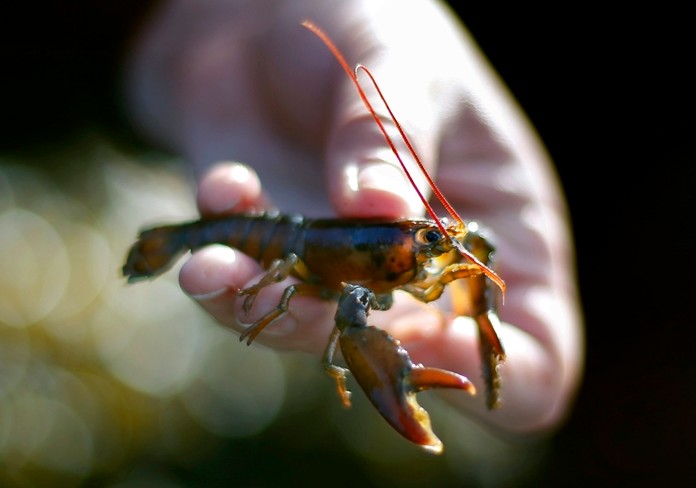
Portland, Maine (AP) — Baby lobsters are continuing to appear in high numbers off some parts of Canada while tailing off in New England, raising questions about what the valuable shellfish’s population will look like in several years.
University of Maine scientist Rick Wahle has documented trends in baby lobster density for years, and released new data for 2018 this month. The new data reinforce recent trends about lobsters that show upticks off sites in Atlantic Canada, such as some areas in Nova Scotia, Wahle said. Meanwhile, the Gulf of Maine reported below average numbers from Bar Harbor to Cape Cod, he said.
Young lobsters settle into the ocean bottom, where they take shelter as they grow. Wahle tracks where lobsters are settling in 23 areas from Rhode Island to Prince Edward Island, Canada. This year’s data showed high totals in Canadian locations such as St. Mary’s Bay, Nova Scotia, and the southern Gulf of St. Lawrence, but low numbers in Maine fishing areas such as the Midcoast region and Casco Bay.
American fishermen compete with Canada for the same species of lobster, which anchors one of the most lucrative fisheries in either country. Some scientists have said the shellfish appear to be moving north as waters warm.
“It’s as if this wave that has crested in Maine is now increasing in Atlantic Canada,” Wahle said.
New England’s commercial harvest of lobster has been strong in recent years, but it’s dependent on young lobsters growing to maturity. Some New England sites, such as those off Rhode Island, show few baby lobsters at all.
Signs about the future of the lobster fishery in Maine are mixed, as state government surveys have also shown large numbers of lobsters that have not yet reached legal size residing in deeper waters, Wahle said. Still, the decline in settlement in the Gulf of Maine has “raised concerns over the future of this region’s fishery,” according to his annual update of his American Lobster Settlement Index.
America’s lobster industry is based mostly in Maine, and its haul of the crustaceans has been high all decade. The state’s catch peaked at an all-time high of 132.6 million in 2016 before falling to 111.9 million — still a historically high number — in 2017.
The haul rebounded to nearly 120 million pounds (54 million kilograms) last year, and the price lobstermen received for their catch was also strong, as the fishery nearly topped half a billion dollars in value at the docks for the third time in history. The shellfish are easily available for many U.S. consumers, especially in the Northeast, and retail prices have been steady.
But lobstermen face challenges such as new protections designed to aid endangered North Atlantic right whales. The fishery is also facing a bait shortage.
Democratic Rep. Jared Golden of Maine has said the federal government is asking Maine lobstermen, whose industry is critical to the state, “to make huge sacrifices without clear evidence that those sacrifices will have any positive impact on right whales.” Conservationists have said the new protections are needed to save the whales, which number only slightly more than 400, from extinction.
 |
 |
 |





